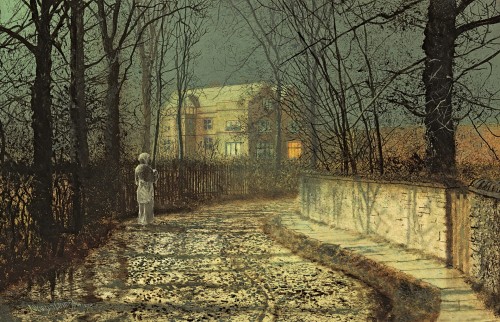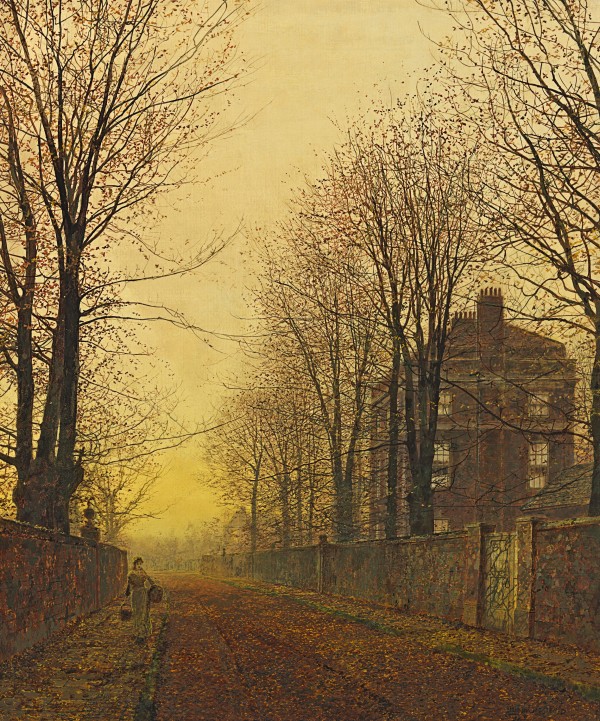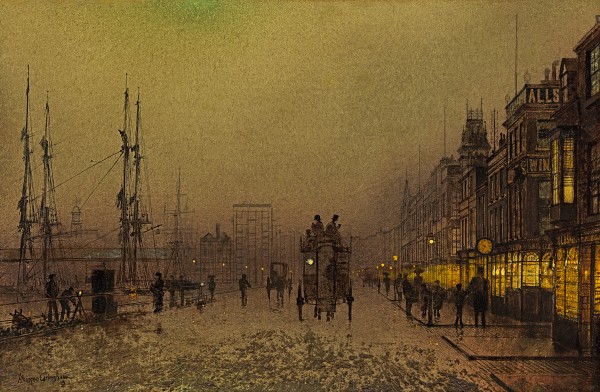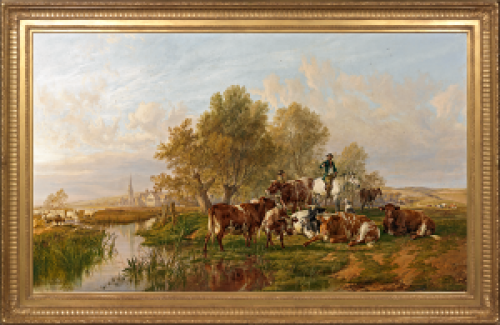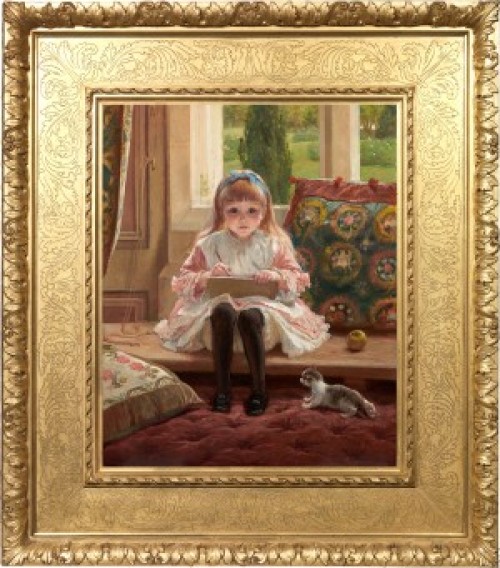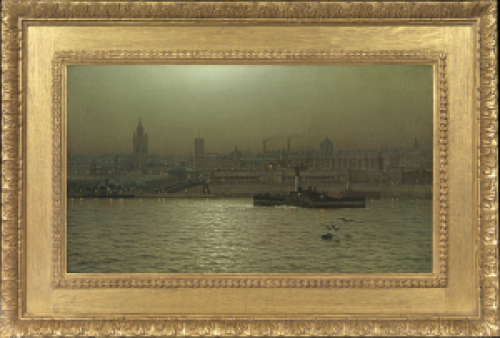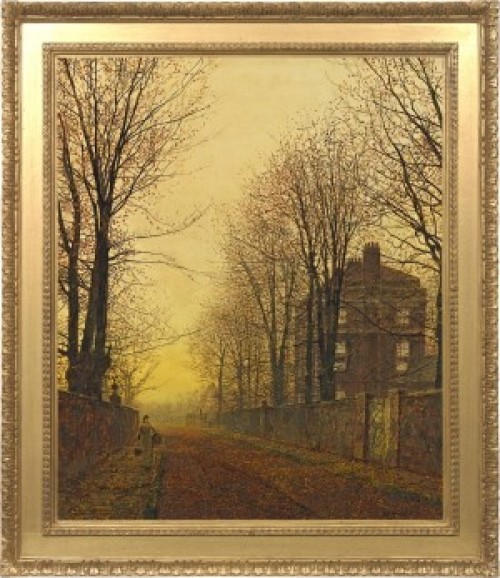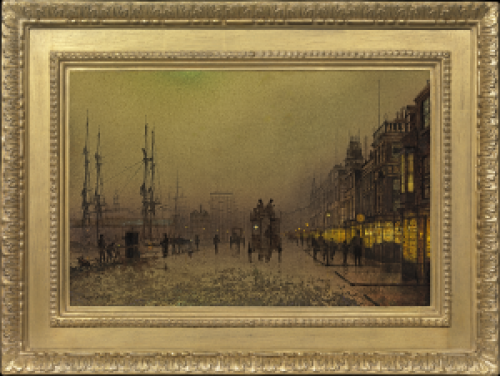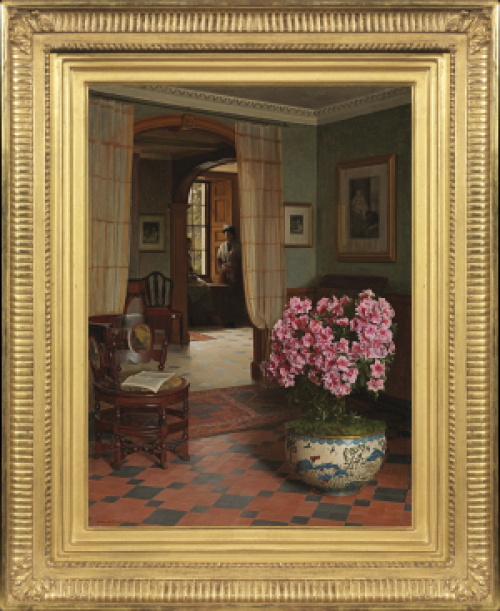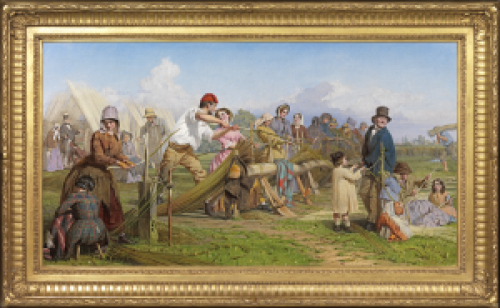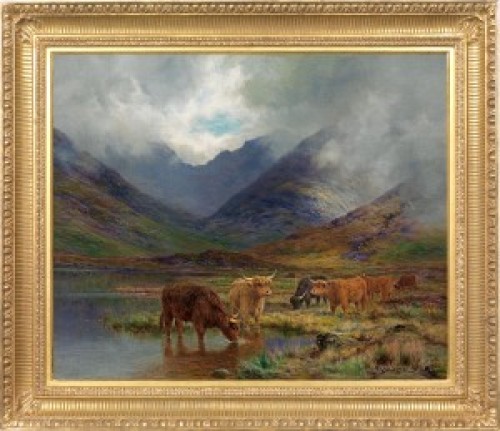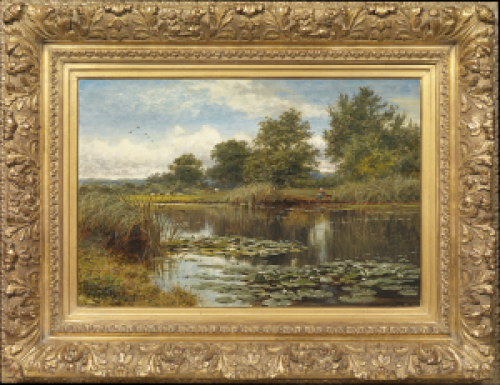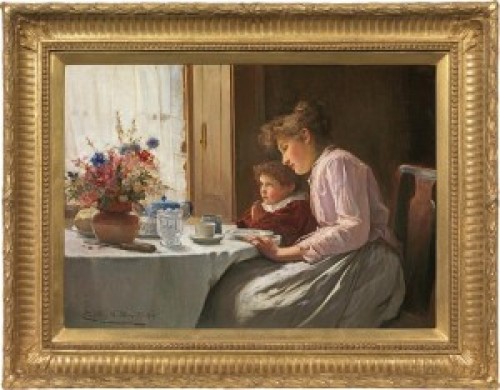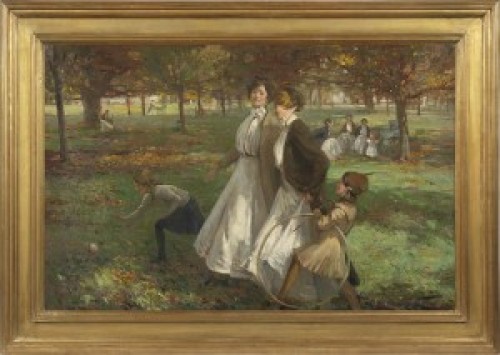JOHN ATKINSON GRIMSHAW
1836 - Leeds - 1893
Ref: CC 210
A moonlit street
Signed and dated lower left: Atkinson Grimshaw 1874
Oil on board: 9 ¼ x 13 ½ in / 23.5 x 34.3 cm
Provenance:
Private collection, Canada;
Richard Green, London, 1996;
private collection, USA
Exhibited:
London, Richard Green, John Atkinson Grimshaw 1836-Leeds-1893, 11th Feburary-7th March 1998, no.7, illus. in colour
Views of moonlit suburban lanes, such as this charming work, were to become one of Grimshaw’s most accomplished subjects. The house in the background may well be Grimshaw’s own home, Knostrop Hall. Inspired by the deserted lanes of his native Leeds and adopted London, Grimshaw created a whole new form of the moonlit street genre, nonetheless rooted in the townscapes of the art of the past.
Alexander Robertson has eloquently described this genre: ‘The newly built villas of England’s Victorian cities, seen beyond high-walled lanes, certainly formed one of Grimshaw’s most memorable creative images, by presenting them in moonlight he established a new genre. There were, of course, many precedents for other types of night scene; riverscapes of the Dutch seventeenth century painted Aert van der Neer; the landscapes of Joseph Wright of Derby; the moonlights of the Pether family in the nineteenth century; and also paintings by Turner forsaking the golden light of the sun, on occasion to paint the moon.’[1]
John Atkinson Grimshaw was a Victorian artist who became famous for his sombre views of the dockyards and his nocturnal scenes of urban lanes with leafless trees silhouetted against the moonlight sky. During his later life, he became a close friend of James McNeill Whistler who admired his work and admitted: ‘I considered myself the inventor of nocturnes until I saw Grimmy’s moonlight picture.’
Born in Leeds, the son of an ex-policeman, Grimshaw first took up painting while he was employed as a clerk for the Great Northern Railway. He married his cousin Frances Theodosia Hubbarde in 1858 and by 1861, he had abandoned his job in order to devote all his time to becoming an artist. In his early work, John Atkinson Grimshaw was influenced by John Ruskin’s creed of ‘truth to nature’ and adopted the detailed Pre-Raphaelite technique of the Leeds painter, John William Inchbold. He was also fascinated by the relatively new art of photography and may have used a camera obscura in developing his compositions. Towards 1865, he renounced this painting style. He painted many urban scenes in which moonlight and shadows were the most striking features. The towns and docks that he painted most frequently were Glasgow Liverpool. Leeds, Scarborough, Whitby and London. These works have become his best known though he also painted landscapes, portraits, interior scenes, fairy pictures and neo-classical subjects. Grimshaw painted mostly for private patrons. He only exhibited five works at the Royal Academy between 1874 and 1876.
By 1870, Grimshaw had become successful enough to move to Knostrop Old Hall, a seventeenth century mansion about two miles from the centre of Leeds, which featured in many of his paintings. He rented another home near Scarborough which he called ‘The Castle by the Sea’, towards 1876. Grimshaw suffered a serious financial disaster in 1879 and had to leave his house at Scarborough. He moved to London and rented a studio in Chelsea, leaving his family at Knostrop. He returned to Knostrop, where he died in 1893. Several of his children, Arthur Grimshaw (1864-1913), Louis H Grimshaw (1870-1944), Wilfred Grimshaw (1871-1937) and Elaine Grimshaw (1877-1970), became painters.
The work of Grimshaw is represented in the Bradford City Art Gallery, the Shipley Art Gallery, Gateshead, the Gloucester Museum and Art Gallery, the Bankfield Museum, Halifax, the Harrogate Museums and Art Gallery, the Ferens Art Gallery, Kingston-upon-Hull, the Huddersfield Art Gallery, Kirklees Metropolitan Council, the Harris Art Gallery, Preston, the Leeds City Art Gallery, the Walker Art Gallery, Liverpool, the Guildhall Art Gallery and the Tate Gallery, London, the Scarborough Art Gallery, the Wakefield Art Gallery and Museums, the Pannett Gallery, Whitby, the Musée des Beaux-Arts, Brest, France, the Wadsworth Atheneum, Hartford, Connecticut, the Nelson-Atkins Gallery, Kansas City, Missouri, the Minneapolis Institute of Arts, Minneapolis, Minnesota, the Yale Center for British Art, New Haven, Connecticut, the Museum of Art, New Orleans, Louisiana, the Rhode Island School of Design, Providence, Rhode Island in the United States, the Shepparton Art Centre, Welsford, Victoria, Australia and the King George VI Art Gallery, Port Elizabeth, South Africa.
[1] Alexander Robertson, Atkinson Grimshaw, Oxford 1988, p.86.

